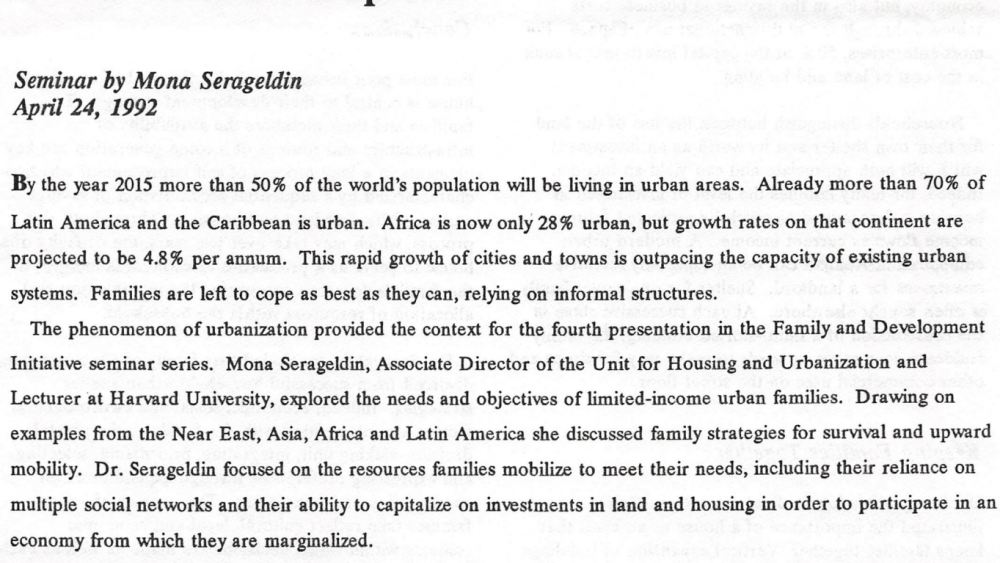Abstract
Between 2010 and 2012, I2UD contributed to a research series by ICLRD on public housing in Northern Ireland and the Republic of Ireland, where residents and local officials worked to improve housing and community in economically and socially segregated public housing estates.
I2UD generated regional planning profiles for six metropolitan estates in Ireland and Northern Ireland: Springfarm, Gobnascale, Carran Crescent, Cranmore, Mahon, and Adamstown. These reports were featured in the annual conference and published in ICLRD’s Journal, “Borderlands.” The Northern Ireland Housing Executive and the Housing Agency in Ireland also published the case studies. I2UD staff also contributed roadmaps for developing shared services among local governments, training and education activities, and cross-border river basin research including a comparative report on the Connecticut River (Northeastern United States) basin water quality.
Documents below begin with a final document prepared for the Sixth Annual ICLRD Conference in January 2011, which focused on the challenges of “Doing More with Less”: “Shared Services Across Local Government” (Deborah Peel, Brendan O’Keeffe, Linda Shi, Kendra Leith, Karen Keaveney, 2011). The report was “undertaken as part of the International Centre for Local and Regional Development’s (ICLRD) EU-Funded initiative, CroSPlaN. Funded under INTERREG IVA, and administered by the Special EU Programmes Body, this programme promoted the development of a cross-border planning network by promoting the opportunities for collaboration in identified areas of need.
In addition, ICLRD contributed a detailed profile of the Basel Metropolitan Area developed in their research programme on cross-border and inter-jurisdictional planning. The case on Basel was developed under the ICLRD’s Cross-Border Spatial Planning Network Programme (CroSPlaN) funded by the EU INTERREG IVA Programme managed by the Special EU Programmes Body. A case on the Boston Metropolitan Area is also available on the ICLRD website.
Geography Note
The Basel Metropolitan Area extends across three countries: Switzerland, France and Germany. The Trinational Eurodistrict of Basel is an organization of municipalities and cities in the trinational surroundings of Basel. The TEB acts as coordinator for cross-border projects between the German, French and Swiss cities around Basel and promotes the cultural and linguistic exchange between the people living in the region. [Wikipedia, Trinational Eurodistrict of Basel, 2022]
See related I2UD projects below
Related I2UD Projects
Related by – City or Community Case Studies
“Planning for Climate Adaptation Program” for Four Dominican Republic Municipalities: Santo Domingo National District, Santiago de los Caballeros, San Pedro de Macoris, and Las Terrenas, 2015
“National Urban Policies in Arab States,” Regional Assessment and Case Studies on NUPs in Egypt, Jordan, Morocco, Saudi Arabia and Sudan, 2014
“Arusha Urbanization Strategy and Urban Development Plan,” Development Strategy for Arusha Municipality, Tanzania, 2009-2012
ICLRD: Urban Reconciliation Case Studies for Public Housing Estates in Ireland and Northern Ireland, with Study Profile on the Basel Metropolitan Area, 2010-2012
Executive Training Course 2006: “Strategic Planning for Sustainable Infrastructure Development,” Workshop Curriculum with Case Studies, Pretoria, South Africa, 2006
IEP 2003: “Infrastructure and Partnerships for Local Economic Development” in Pretoria and Bloemfontein, South Africa, International Education Programs, 2003
IEP 2002: “Strategic Planning for Local Development & Urban Revitalization,” Program Overview, International Education Programs, 2002
Workshops on “Strategic Planning and Management of Municipal Infrastructure Programs,” from Review of Grant-Funded MIPs in South Africa, May-June 1999
“Housing Microfinance Initiatives,” Case Study for USAID Microenterprise Best Practices Initiative, 1999-2000
ITP 1998: “The Role of Public/Private Partnerships in Urban Improvements,” with Case Studies on Kreuzberg, Berlin (Germany), GIS Mapping on Cape Cod (US) and the Maarouf Quarter of Cairo (Egypt), 1998
“City of Szczecin Capital Improvement Program,” Case Studies for Technical Assistance Program, Szczecin, Poland, 1996
ITP 1994: “Revitalization in Older Urban Spaces,” Upham’s Corner, Dorchester, Boston, South Boston, and New Haven (US); Montpellier (France); and Cork (Ireland) with Case Studies, International Education Programs, 1994
“Introduction to Local Finances,” Teaching Monographs and Case Studies on Finance Management, by Visiting Lecturer David C. Jones, 1994-1999
Related I2UD Photograph Galleries


